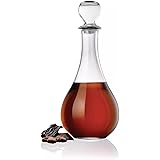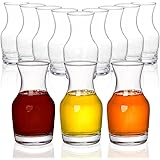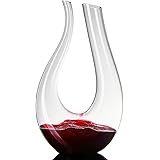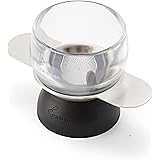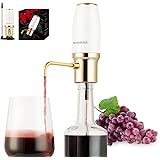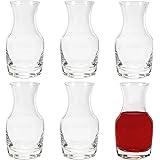Unlocking the Art of the Sip: Exploring the 5 Essential Components of Wine
For millennia, wine has captivated humanity, weaving together threads of history, culture, and pure scientific magic into a single, enchanting glass. Whether you’re a budding enthusiast or a seasoned connoisseur, truly appreciating this ancient beverage means understanding its fundamental building blocks. As highlighted in the insightful video above, grasping these core elements is key to deciphering the nuances of any pour. Let’s delve deeper into the five essential components of wine that dictate its character, flavor, and aging potential, transforming your tasting experience from mere consumption to an informed journey.
Understanding these five elements – sweetness, acidity, tannins, alcohol, and body – allows you to articulate what you’re tasting, predict how a wine might age, and even pair it more effectively with food. This deeper insight not only elevates your personal enjoyment but also connects you to the intricate craftsmanship behind every bottle. We’ll explore each in detail, building upon the foundational knowledge provided in the video, to give you a comprehensive grasp of what makes your favorite wine truly unique.
1. The Delicate Dance of Sweetness: Residual Sugar and Your Palate
The journey through wine’s essential components begins with sweetness, a characteristic that often defines a wine’s initial appeal. All wine starts as grape juice, a liquid naturally abundant in sugars. The riper the grapes when harvested, the higher their sugar content, setting the stage for the wine’s eventual sweetness level. During fermentation, yeast performs a remarkable transformation, converting these grape sugars into alcohol. The precise moment this process is halted, or specific winemaking techniques are employed, determines the amount of residual sugar (RS) left in the wine.
Winemakers masterfully control residual sugar, often by stopping fermentation early to preserve natural sweetness, or through fortification, where spirits are added. This spectrum of sweetness is vast, from bone-dry wines with virtually no perceptible sugar to lusciously sweet dessert wines. For instance, a bone-dry Sauvignon Blanc typically contains between 1 and 5 grams of residual sugar per liter, making it crisp and refreshing. In stark contrast, a rich German Riesling or a Sauternes might boast upwards of 35 grams of sugar per liter, presenting a noticeably sweet and often viscous texture on the palate.
The perception of sweetness begins at the very tip of your tongue, creating an immediate impact. As a useful indicator, observe the “legs” or “tears” that form on the inside of your glass after swirling, a phenomenon known as the Marangoni effect. While often associated with alcohol content, these rivulets also indicate viscosity, which is strongly influenced by residual sugar. The video’s pro tip notes that thicker, slower-falling legs often signify a sweeter wine, as the higher sugar content increases the wine’s density. This visual cue can offer a preliminary hint about the sweetness level even before the first sip.
2. The Lively Edge: Acidity, Freshness, and Longevity in Wine
Next among the essential components of wine is acidity, the invigorating backbone that provides freshness, balance, and the characteristic “zing.” Acidity is what makes a wine feel lively on your palate, similar to the sensation of biting into a crisp green apple or a tart lemon. It’s often perceived as a tingling sensation on the sides of your tongue, leaving your mouth watering. This crucial element prevents a wine from tasting flat or “flabby,” ensuring a vibrant and clean finish.
Beyond immediate freshness, acidity plays a critical role in a wine’s ability to age gracefully. High acid wines, such as many Rieslings or certain Champagne styles, possess the structural integrity to evolve beautifully over decades, developing complex secondary and tertiary aromas. Grapes cultivated in cooler climates typically exhibit higher acidity due to a longer, slower ripening process that preserves malic and tartaric acids. Consider white wines from regions like Chablis, France, known for its unoaked Chardonnay, or Marlborough, New Zealand, famous for its zesty Sauvignon Blanc. These wines are celebrated for their pronounced acidity, often described as “crisp,” “bright,” or “racy.”
Acidity is also a pivotal factor in food pairing. A wine with good acidity can cut through rich, fatty foods, cleansing the palate and enhancing both the wine and the dish. For example, a high-acid sparkling wine can wonderfully complement fried foods, while a zesty white wine brightens cream sauces or fatty fish. Without sufficient acidity, a wine can taste heavy and one-dimensional, failing to engage the palate or offer much interest, making it one of the most vital elements to a well-balanced wine.
3. The Structural Backbone: Understanding Tannins in Red Wine (and Beyond)
Tannins, often a point of fascination and confusion for new wine drinkers, are polyphenolic compounds that contribute significantly to the structure, texture, and aging potential of wine. While most prominent in red wines, where they are extracted from grape skins, seeds, and stems during fermentation, tannins also originate from oak barrels used in aging. These compounds are responsible for the astringent, mouth-drying sensation often compared to strong black tea or biting into an unripe persimmon. Though they make up a very small percentage of the wine’s total composition, their impact is undeniable.
The intensity of tannins varies widely, from incredibly soft and silky to robust and aggressive. Younger red wines, especially those made from thick-skinned grapes like Cabernet Sauvignon or Syrah, often exhibit firm, sometimes harsh tannins. Decanting these wines can be immensely beneficial, as exposure to oxygen helps to soften the tannins, promoting a more integrated and pleasant texture on the palate. With extended bottle aging, these tannins polymerize and precipitate, resulting in a wine that feels smoother and more mellow. This process explains why older red wines often possess a velvety texture and a more harmonious balance.
Beyond their structural role, tannins also contribute to the aromatic complexity of wine, adding notes of tobacco, cedar, or leather. Moreover, these polyphenols are well-regarded for their antioxidant and anti-inflammatory properties, fueling the popular notion of red wine’s health benefits. This scientific basis offers a glimpse into why a moderate glass of red wine is often linked to cardiovascular health, thanks in part to these powerful compounds. Even white and rosé wines can contain tannins, albeit in much lower concentrations, primarily from oak aging or extended skin contact during production.
4. The Warm Embrace: Alcohol’s Influence on Body, Flavor, and Balance
Alcohol, or ethanol, is an indispensable component of wine, born from the yeast’s conversion of grape sugars during fermentation. Typically, wines range from 8% to 15% Alcohol by Volume (ABV), though some fortified wines can reach upwards of 20%. This percentage is not merely a measure of potency; it’s a critical factor that carries flavors and aromas, contributes to the wine’s body and texture, and significantly influences its overall balance and classification.
Alcohol acts as a solvent for flavor compounds, helping to deliver the wine’s aromatic profile to your nose and palate. Wines with higher alcohol content often present a warming sensation, particularly in the back of the throat, and can feel more “full-bodied” and substantial. Conversely, lower alcohol wines might appear lighter and more delicate. The balance of alcohol with other elements—sweetness, acidity, and tannins—is crucial. A wine with too much alcohol might taste “hot” or imbalanced, while insufficient alcohol can leave it feeling thin or watery, lacking depth and character.
The level of alcohol in a wine is largely determined by the ripeness of the grapes, which in turn is heavily influenced by climate. Grapes grown in hot, sunny regions, such as those in California’s Napa Valley or Australia’s Barossa Valley, tend to accumulate more sugar, leading to higher alcohol levels in the finished wine. Conversely, grapes from cooler regions, like Germany’s Mosel or France’s Loire Valley, ripen more slowly, producing wines with typically lower alcohol and higher acidity. Interestingly, individual genetic makeup can even affect how one perceives alcohol, contributing to the diverse sensory experiences of wine drinkers.
5. The Palpable Impression: Decoding Wine’s Body and Texture
Finally, we arrive at the body of the wine, a concept that synthesizes the combined effects of alcohol, residual sugar, tannin, and other dissolved solids (extract). The body of a wine refers to its perceived weight and texture on the palate, often categorized as light-bodied, medium-bodied, or full-bodied. It’s a holistic sensation, much like comparing different dairy products to understand their mouthfeel.
As the video aptly describes, envisioning the difference between water and whole milk provides an excellent analogy. A light-bodied wine, such as a crisp Italian Pinot Grigio or a delicate Vinho Verde, might feel as refreshing and airy as water, leaving a subtle impression. These wines typically have lower alcohol, minimal residual sugar, and softer tannins. In contrast, a full-bodied wine, like a robust California Cabernet Sauvignon, an Australian Shiraz, or a rich Port, delivers a sensation akin to thick cream or whole milk. These wines are often characterized by higher alcohol content, concentrated flavors, and sometimes more prominent tannins, contributing to a more substantial and lingering presence on the palate.
Medium-bodied wines strike a balance between these two extremes, offering more weight and flavor than light-bodied wines but without the intensity of full-bodied examples. A classic medium-bodied wine might be a French Merlot or a versatile Chardonnay from a cooler climate. Understanding wine body helps to inform preferences and guide food pairings, as the weight of the wine should generally match the weight of the dish. Identifying these essential components of wine allows you to appreciate the intricate artistry that goes into crafting each bottle and discover a truly well-balanced wine that speaks to your palate.


